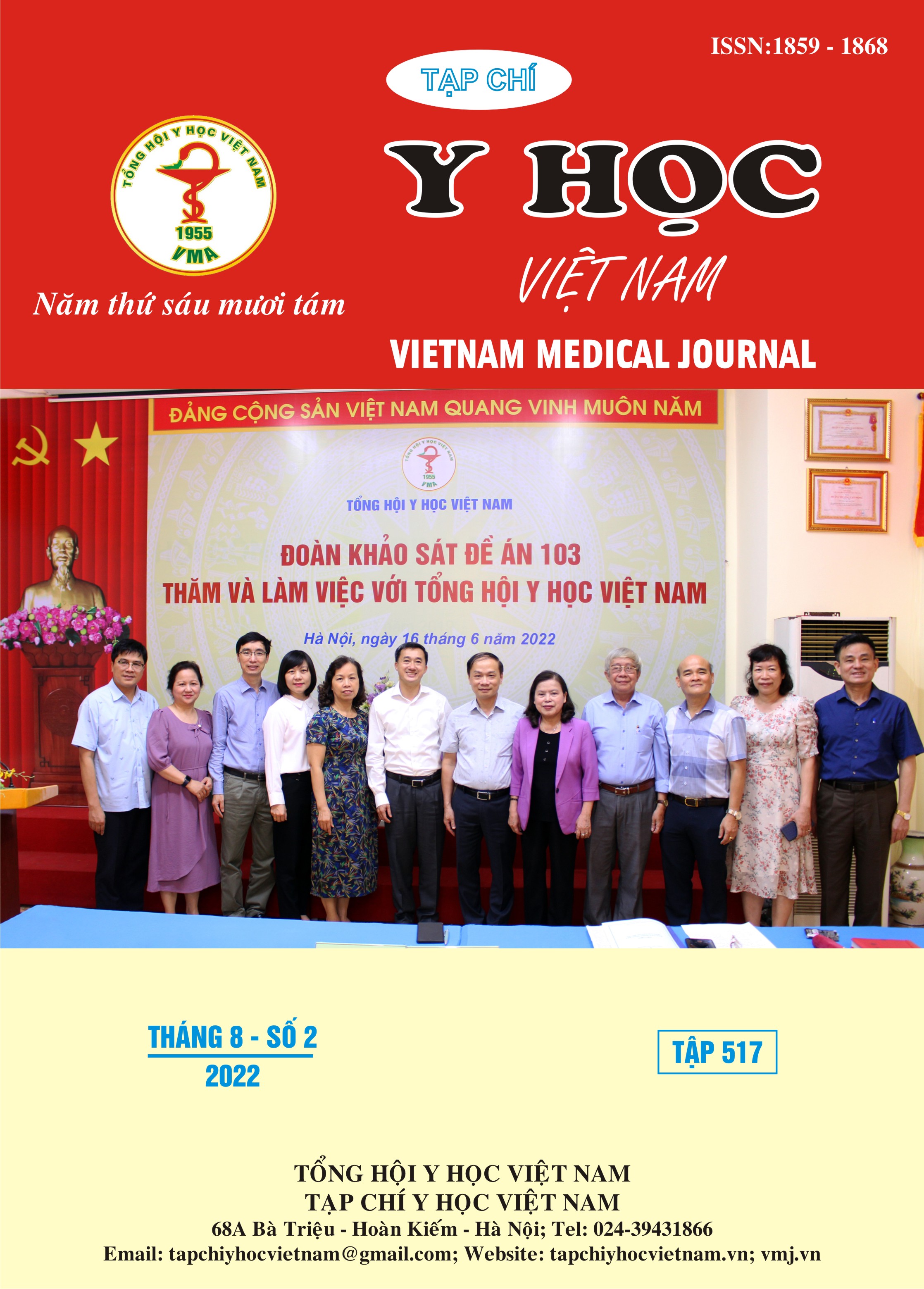EFFECT OF GROWTH HORMONE THERAPY ON CHILDREN WITH GROWTH RETARDATION DUE TO SMALL FOR GESTATIONAL AGE
Main Article Content
Abstract
Small for gestational age (SGA) is generally defined as a weight and/or length at birth that is 2 standard deviations (SD) or more below the mean for gestational age. For the 10 - 15 percent of those that are SGA without catchup growth by 2 years old. GH treatment is effective, safe in improving height in children with SGA. Objective: To evaluate outcomes of patients with SGA treated with rhGH. Subjective: 43 SGA children without catchup growth by 2 years old were treated with GH for at least 12 months. Methods: case series report. To evaluate height, weight after 1 year, 2 years, 3 years and 4 years ofGH-treatment. Results: 43 SGA children were received GH treatment at the average age of 5,9 ± 3,0 years. Z-score height increased during of treatment 2,32 ± 1,30 (after 1 year), 2,38 ± 0,5 (after 2 years) và 1,91 ± 0,35 (after 3 years) and 1,86 ± 0,35 (after 4 years). The best height velocity in 2-4 years old group (1.2 ± 0.98 SD) compared to 5-8 years (0,77±0,91 SD) and 9-16 yearsgroup (-0,7±1,48 SD) with P < 0,05. The weight improved over the years from -3,39 SD before treatment, to -2,84 SD after 1 year, -2,61 SD after 2 years, -2,41 SD after 3 years and -2,42 SD after 4 years of treatment. Conclusion: GH treatment for SGA children has the best effect on height improvement after the first year, can catch up growth, achieve normal height for age after 4 years. Early initiation of GH treatment in children with SGA improves their chance of achieving height velocity better.
Article Details
References
2. Argente J., Gracia R., Ibáñez L. et al. (2007). Improvement in growth after two years of growth hormone therapy in very young children born small for gestational age and without spontaneous catch-up growth: results of a multicenter, controlled, randomized, open clinical trial. J Clin Endocrinol Metab, 92(8), 3095–3101.
3. Clayton P.E., Cianfarani S., and Czernichow P. (2007). Management of the Child Born Small for Gestational Age through to Adulthood: A Consensus Statement of the International Societies of Pediatric Endocrinology and the Growth Hormone Research Society. The Journal of Clinical Endocrinology & Metabolism, 92(3), 804–810.
4. Ester W., Bannink E., van Dijk M. et al. (2008). Subclassification of small for gestational age children with persistent short stature: growth patterns and response to GH treatment. Horm Res, 69(2), 89–98.
5. Hokken-Koelega A.C.S., De Ridder M.A.J., and Lemmen R.J. (1995). Children Born Small for Gestational Age: Do They Catch Up? Pediatr Res, 38(2), 267–271.
6. Horikawa R., Tanaka T., Nishinaga H. et al. (2020). The long-term safety and effectiveness of growth hormone treatment in Japanese children with short stature born small for gestational age. Clin Pediatr Endocrinol, 29(4), 159–171.
7. Kum C.D., Rho J.G., Park H.K. et al. (2021). Factors influencing growth hormone therapy effect during the prepubertal period in small for gestational age children without catch-up growth. Ann Pediatr Endocrinol Metab, 26(1), 31–37.
8. Labarta J.I., de Arriba A., Ferrer M. et al. (2020). Growth and metabolic effects of long-term recombinant human growth hormone (rhGH) treatment in short children born small for gestational age: GH-RAST study. J Pediatr Endocrinol Metab, 33(7), 923–932.
9. Lee PA, Gruters A, Tauber M et al. (2008). One year growth hormone (GH) treatment response in short children born small for gestational age (SGA) dependent on baseline characteristics: data from the NordiNet international outcome study (IOS).


